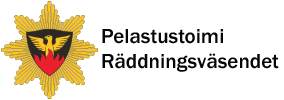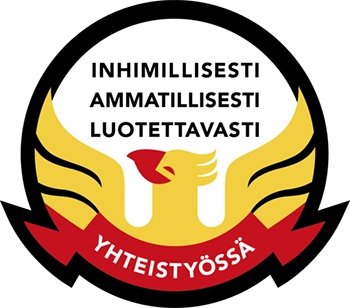

Rescue services
Rescue service actors
Ministry of the Interior Department for Rescue Services
The Ministry of the Interior directs, guides and supervises rescue services, is in charge of the preparedness and organisation of rescue services at national level and coordinates the activities of various ministries and sectors in the field of rescue services and their development.
Finnish Supervisory Agency supervise rescue services and their coverage and quality within their area of operation, and support the Ministry of the Interior in its rescue services duties.
The wellbeing services counties are responsible for organising rescue services in their areas. Rescue services must be planned and carried out so that they can be performed in the most effective and appropriate way and so that the measures required in accidents and dangerous situations can be carried out effectively and without delay.
In Finland we have 21 rescue departments which carry out rescue service tasks in their regions.
Contract fire brigades play an important role in the system of rescue services. They participate in rescue missions and form the reserve needed in emergencies and situations requiring civil protection.
Several organisations which play an important role in such areas as accident prevention and rescue sector training operate in Finland.
The Fire Protection Fund is an off-budget entity that grants financial aid to support fire prevention and rescue activities.
The Emergency Services Academy provides vocational education and training leading to qualifications in rescue services and Emergency Response Centre operations as well as education leading to a university of applied sciences degree for fire officers.
Preventing accidents
The rescue departments support residents, entrepreneurs and other people in their regions in preventing accidents by means of information, advice and safety communications.
Rescue operations
Rescue operations consist of preventing a threatening accident, minimising damage and injuries caused by an accident that has already occurred, and providing first aid to help the injured to recover.
Collaborative areas for rescue operations
The most important task of the collaborative areas for rescue operations is to prepare for rescue operations in the event of large-scale and long-term incidents and accidents. Rescue departments with a university hospital in their area are responsible for organising collaboration in rescue operations in their respective collaborative areas.
Prehospital emergency medical care
The rescue departments organise the provision of regional emergency medical services in cooperation with the hospital districts. It is a fundamental part of rescue department operations.
International cooperation
Finnish rescue services engage in continuous international cooperation with the European Union, the UN, NATO, the Nordic countries and other neighbouring countries alike.
Preparedness
Preparedness means preparing in advance for various disasters, emergencies and even a war.
Strategy
The vision of the strategy which guides rescue service operations and their ongoing reform is A Safe and Resilient Finland - together.
Communications guidelines for rescue services in 2024–2026
These guidelines for communications in rescue services are intended as a common base that can be supplemented by the organisations' own communications plans.
Legislation
Rescue services are subject to many acts and decrees, the most important one of which is the Rescue Act.
Statistics
The rescue departments’ safety communications reach about 900,000 people a year. The number of emergency missions is around 100,000.
Publications and instructions
Instructions and other publications relevant to the rescue services are published by the Ministry of the Interior, mainly in the ministry's publication series, but also by such actors as the Emergency Services Academy and the Partnership Network of Finnish Rescue Services.
Education and training
The Emergency Services Academy based in Kuopio organises vocational education and training as well as in-service training for rescue service and Emergency Response Centre personnel, preparedness training, and training for international civilian crisis management missions.
